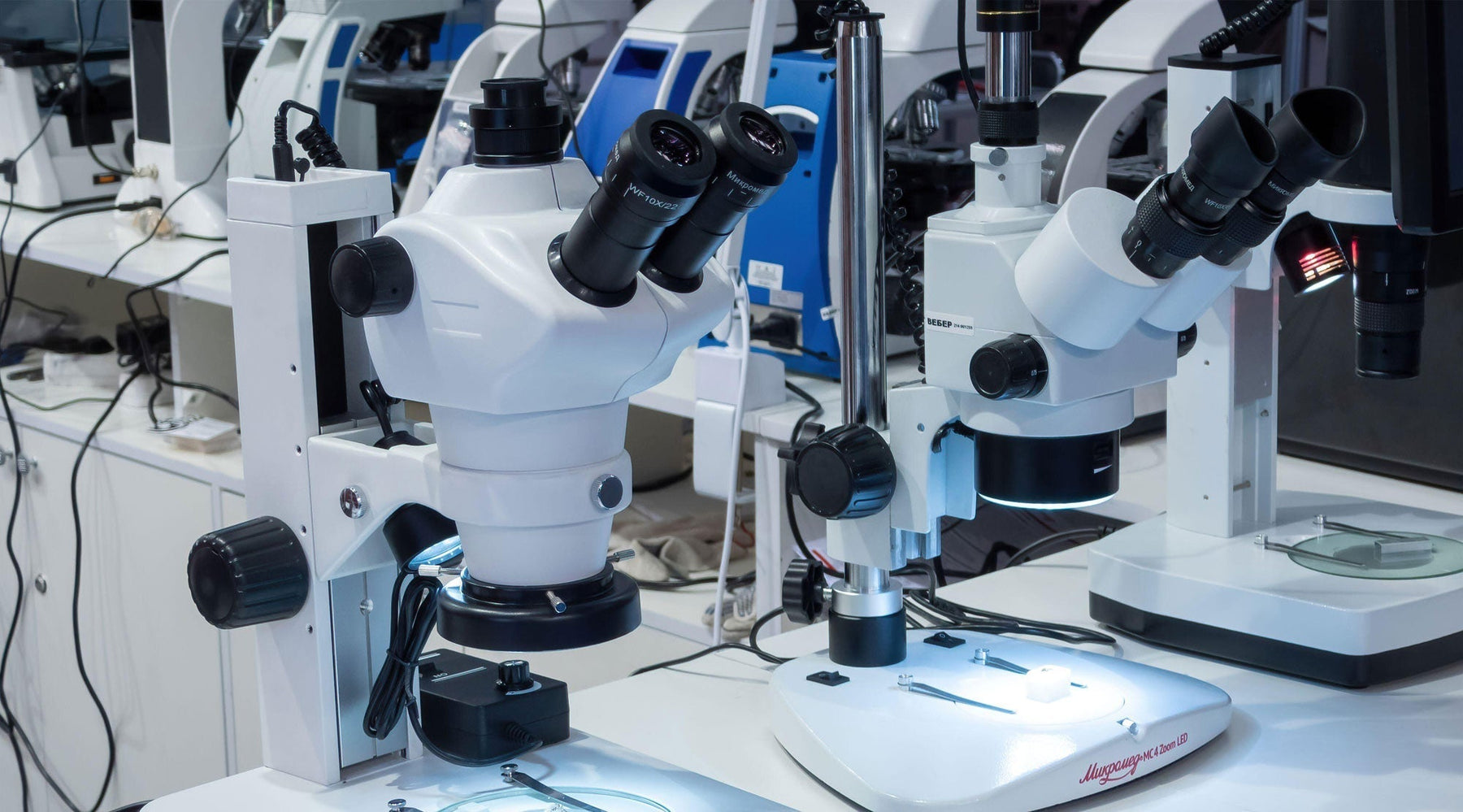
What’s the difference between stereo and biological microscopes?
Microscope shopping can be overwhelming, especially for newcomers.
But fear not! This short guide will shed light on the two main types of microscopes that you'll encounter – stereo and biological (also known as compound).
Let’s take a quick look at the differences.
Understanding the distinctions
Stereo and biological microscopes share many similarities, but they’re designed to look at different things.
Stereo microscopes are perfect for examining larger objects like insects, rocks, leaves, circuit boards or stamps – anything you can hold in your hand and see with your naked eye.
On the other hand, biological microscopes are designed to inspect truly tiny specimens such as microorganisms or cells.
Of course, there are a few other important differences, which we’ll explore below.
Stereo microscopes
Stereo microscopes (also known as dissecting microscopes) are a popular choice in various fields, sciences and hobbies, thanks to their versatility and ease of use.
Although their magnification is relatively low (typically up to 45x), they provide several benefits that more than make up for it.

Unlike biological microscopes, stereo microscopes offer ample workspace, allowing you to handle and manipulate specimens while examining them.
They also have the unique ability to display the image in 3D as each eyepiece has its own optical path, creating a sense of stereoscopic depth perception.
These qualities make stereo microscopes perfect for hands-on tasks like inspections, dissections or soldering. Plus, they’re user-friendly and require no sample preparation, making them an excellent choice for educational settings and younger students.
Read more about our Buying Guide for Stereo Microscopes
Biological microscopes
Biological (or compound) microscopes are the more ‘traditional’ microscope you may be familiar with.
They’re widely used in scientific and commercial endeavours, from research labs and veterinary clinics to breweries and wastewater treatment plants.
Biological microscopes have an impressive magnification range, typically from 40x to 1000x, enabling you to examine even individual cells and microorganisms in fine detail.
While both stereo and biological microscopes are similar, the process of using a biological microscope tends to be slightly more involved.

You’ll need to prepare samples in advance and place them on glass slides for safe viewing. The samples must be transparent enough to allow light to pass through, and this might involve slicing larger specimens into thinner sections.
However, you don’t have to do all the preparation yourself. You have the option to use pre-prepared slides, which offer a wide variety of high-quality samples at reasonable prices. This way, you can avoid a lot of hassle and still get excellent results.
While adjusting the focus, magnification and lighting on a biological microscope might feel tricky at first, especially for younger or unsupervised users, don’t let that deter you.
With a little persistence, you’ll find these microscopes are extraordinary tools that will introduce you to a fascinating microscopic world.
Both stereo and biological microscopes are excellent choices – just take a moment to consider the types of specimens you’ll be examining before making your decision.
